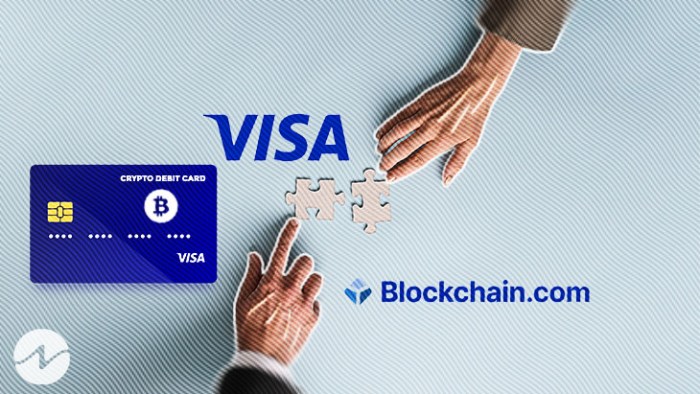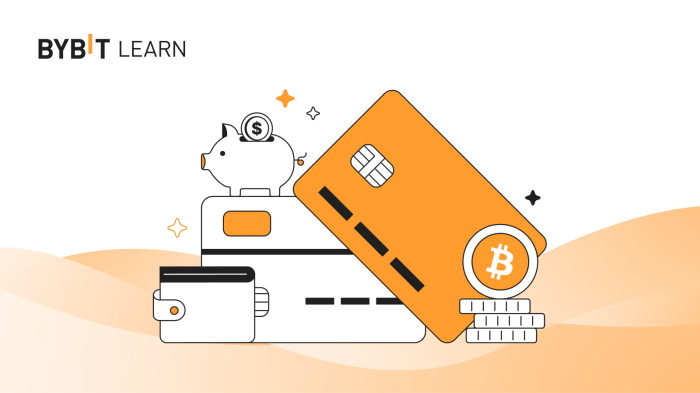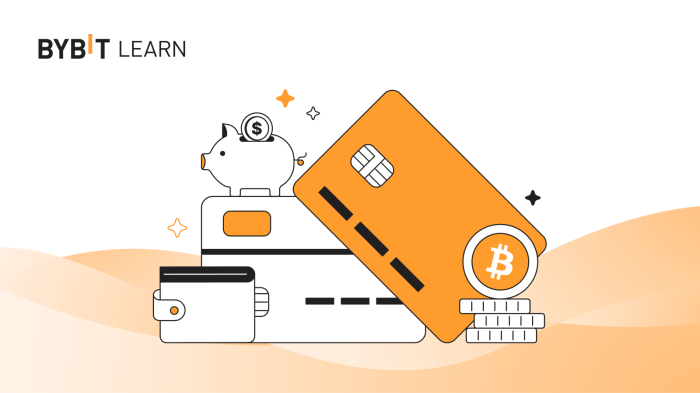How to use a crypto debit card to make purchases? This guide dives deep into the world of crypto debit cards, explaining everything from the basics to advanced strategies. We’ll explore the different types, setup process, and the security considerations you need to know before swiping your digital wallet. Learn how to make purchases, manage fees, and troubleshoot any issues that might arise.
From understanding the various cryptocurrencies supported by different cards to comparing their fees and features, this comprehensive guide provides a clear and concise overview. We’ll cover practical examples of how to use your crypto debit card for everyday purchases, international transactions, and online shopping, helping you navigate the world of digital currencies with confidence.
Introduction to Crypto Debit Cards
Crypto debit cards are revolutionizing how people interact with cryptocurrency. These cards allow users to spend their crypto holdings directly at merchants, effectively bridging the gap between the digital world of cryptocurrencies and the physical world of everyday transactions. Instead of exchanging crypto for fiat currency, users can use their crypto directly, streamlining the process and potentially saving on conversion fees.A crypto debit card essentially functions as a virtual credit card linked to a cryptocurrency wallet.
When a purchase is made using the card, the transaction is authorized by the linked wallet, and the corresponding cryptocurrency is debited from the user’s account. The card issuer converts the cryptocurrency to fiat currency to complete the transaction. This conversion is often done at the prevailing market rate.
Types of Crypto Debit Cards
Different crypto debit cards cater to various needs and preferences. Some are tied to specific cryptocurrency exchanges, while others operate as independent platforms. Cards can also vary in the cryptocurrencies they support, the transaction fees they charge, and the features they offer.
Benefits of Using Crypto Debit Cards
Crypto debit cards offer several advantages to users. One key benefit is the potential for saving on currency conversion fees. Since transactions are processed directly in crypto, users bypass the intermediary steps and potential costs associated with traditional exchanges. Additionally, some cards provide access to exclusive discounts or rewards programs.
Comparison of Crypto Debit Cards
A comparison of popular crypto debit cards highlights their unique characteristics:
| Card Provider | Fees | Features | Supported Cryptocurrencies |
|---|---|---|---|
| Card A | 0.5% transaction fee; $10 monthly fee | Rewards program, travel insurance, ATM access | Bitcoin (BTC), Ethereum (ETH), Litecoin (LTC) |
| Card B | 0.75% transaction fee; no monthly fee | International transactions, budgeting tools | Bitcoin (BTC), Ethereum (ETH), Tether (USDT) |
| Card C | 0% transaction fee; $5 monthly fee | Crypto-specific budgeting, crypto-to-crypto transfers | Bitcoin (BTC), Ethereum (ETH), stablecoins |
The table above demonstrates the variability in fees, features, and supported cryptocurrencies across different crypto debit cards. Carefully consider these factors when selecting a card that best suits your needs and preferences. For instance, if you primarily use Bitcoin and Ethereum, ensure the chosen card supports these cryptocurrencies.
Supported Cryptocurrencies
Crypto debit cards typically support a range of cryptocurrencies, although the specific list may vary depending on the issuer. Popular cryptocurrencies like Bitcoin, Ethereum, and Litecoin are commonly supported. However, some cards may also accept stablecoins and other altcoins. This broadens the range of digital assets that can be used for transactions.
Setting Up a Crypto Debit Card: How To Use A Crypto Debit Card To Make Purchases
Getting your hands on a crypto debit card is a straightforward process, but understanding the necessary steps and required information is crucial for a smooth setup. This process typically involves providing personal details and verifying your identity to ensure security and prevent fraud. The specific requirements vary slightly depending on the issuing bank or provider, but the general steps remain consistent.Setting up a crypto debit card requires careful attention to detail and adherence to the provided instructions.
Mistakes in the application process or omissions in the required documentation can lead to delays or rejection. Thoroughness and accuracy are essential to expedite the approval process and avoid any potential complications.
Account Application Process
The initial step in acquiring a crypto debit card involves filling out an application form. This form typically requests personal information, such as your full name, address, date of birth, and contact details. Completing this form accurately is vital for the smooth processing of your application. Providing incorrect or incomplete information may lead to delays or rejection.
Required Documents and Information
A comprehensive list of documents and information is usually required for verification purposes. These documents serve to verify your identity and establish your financial standing. Commonly requested documents include government-issued photo identification (like a driver’s license or passport), proof of address (utility bills, bank statements), and potentially proof of employment or income. It’s essential to gather these documents beforehand to expedite the application process.
This helps ensure your application is processed quickly and efficiently.
Verification Process
The verification process is a critical part of the crypto debit card setup. It is designed to ensure the safety and security of the cardholder’s financial information. The verification process usually involves several steps, including identity verification through government-issued IDs, address verification, and potentially a review of your financial history. This process is designed to prevent fraudulent activities and protect your financial data.
Step-by-Step Guide
- Application Submission: Access the online application form provided by the crypto debit card provider. Carefully enter your personal information, including full name, address, date of birth, and contact details. Double-check all the entered information for accuracy.
- Document Upload: Upload scanned copies of the required documents, such as your government-issued photo ID (driver’s license or passport), proof of address (utility bill, bank statement), and potentially proof of employment or income. Ensure that the uploaded documents are clear and easily readable.
- Verification Process: The provider will review your application and documents to verify your identity and other relevant details. This may involve a phone call or email for further clarification.
- Approval or Rejection: After successful verification, you will receive notification of your application’s approval. If your application is rejected, the provider will typically provide reasons for the rejection to help you address any issues.
- Activation: Once approved, the crypto debit card will be activated. You will receive instructions on how to activate the card, including any necessary PIN or security codes. Follow the instructions carefully to activate the card and use it for transactions.
Making Purchases with a Crypto Debit Card
Using a crypto debit card for purchases is becoming increasingly popular. This method allows users to seamlessly integrate their crypto holdings into everyday spending, eliminating the need for manual exchanges. This section details the process, merchant acceptance, conversion methods, and security measures involved.Initiating a purchase with a crypto debit card is generally straightforward. The process typically mirrors that of a traditional debit card, but with an added step of selecting the cryptocurrency to use for the transaction.
After selecting the desired crypto asset, the system will automatically convert the amount to the merchant’s accepted currency.
Purchase Initiation Process
The purchase initiation process is usually quite intuitive. Users typically select the desired crypto asset from a list of available options. The system then displays the equivalent fiat currency amount that will be debited from the account. Confirming the transaction, much like a traditional debit card purchase, usually involves entering a PIN or using a biometric authentication method.
Merchant Acceptance
While the adoption of crypto debit cards is growing, not every merchant accepts them. Major retailers and online platforms are leading the charge in accepting crypto debit cards. Examples include some large grocery chains, online retailers, and certain restaurants. The acceptance rate is likely to increase as the technology matures and more merchants see the benefits.
Crypto-to-Fiat Conversion
The conversion of crypto to fiat currency for purchases happens automatically behind the scenes. The crypto debit card provider has agreements with various payment processors that handle this conversion. The conversion rate is often real-time, ensuring the user receives the most current exchange rate. This conversion often occurs at the point of sale.
Payment Options and Costs
Different crypto debit cards may offer various payment options. Some cards might have transaction fees, while others may not. It’s essential to check the terms and conditions of the specific card to understand the potential costs associated with each payment option. Understanding these fees is crucial for responsible financial management.
| Payment Option | Associated Costs |
|---|---|
| Standard Crypto Debit Card Transaction | Potentially a small percentage fee or a fixed amount depending on the card provider. |
| Crypto-to-Crypto Exchange | Transaction fees vary depending on the exchange platform used and the volume of the transaction. |
| Conversion Fees | Often included within the debit card transaction fees. |
Security Measures
The security measures employed by crypto debit card providers vary but typically involve strong encryption and secure transaction protocols. Multi-factor authentication is often required, and users are often prompted to verify transactions with PIN codes or biometric authentication. Card providers prioritize user security to protect their crypto assets and financial information.
Security and Privacy Considerations

Using a crypto debit card introduces a unique set of security and privacy concerns, distinct from traditional debit cards. Understanding these factors is crucial for responsible use and avoiding potential risks. Users must be aware of the security measures employed by providers and their own personal responsibilities in safeguarding their accounts.The security of your crypto debit card depends not only on the provider’s protocols but also on your own vigilance and adherence to best practices.
A combination of robust security measures from the provider and proactive user habits can significantly reduce the likelihood of unauthorized access or fraudulent activity.
Security Protocols Implemented by Crypto Debit Card Providers
Crypto debit card providers implement various security protocols to protect user funds and data. These measures often include multi-factor authentication (MFA), encryption of transactions, and regular security audits. Implementing these safeguards helps prevent unauthorized access and maintain the integrity of the system.
- Multi-factor Authentication (MFA): MFA requires users to provide multiple forms of verification, such as a password and a one-time code sent to a mobile device, to access their accounts. This adds an extra layer of security, making it harder for unauthorized individuals to gain access.
- Transaction Encryption: Secure communication protocols, such as TLS/SSL, are used to encrypt transactions between the user’s device and the card provider’s servers. This ensures that sensitive data, like transaction details, is protected from interception by third parties.
- Regular Security Audits: Providers conduct regular security audits to identify and address potential vulnerabilities in their systems. These audits help ensure the ongoing effectiveness of security measures and proactively address emerging threats.
Potential Risks and Vulnerabilities
Using a crypto debit card carries certain risks, such as phishing scams, malware infections, and social engineering tactics. These risks are similar to those encountered with other online financial services, but the unique nature of cryptocurrencies adds another layer of complexity. Understanding these risks is vital for mitigating their impact.
- Phishing Scams: Phishing scams attempt to trick users into revealing sensitive information, like login credentials or transaction details, by posing as legitimate entities. Users should be cautious of suspicious emails, messages, or websites requesting personal information.
- Malware Infections: Malware can compromise a user’s device and steal sensitive information. Installing reputable antivirus software and practicing safe browsing habits is crucial for protecting against malware attacks.
- Social Engineering: Social engineering tactics exploit human psychology to manipulate users into divulging sensitive information. Users should be wary of unsolicited requests for personal information and exercise caution in interacting with unfamiliar individuals online.
Protecting Your Account from Fraud and Theft
Taking proactive steps to safeguard your crypto debit card account is crucial for preventing fraud and theft. This involves maintaining strong passwords, using unique login credentials for different accounts, and enabling two-factor authentication (2FA).
- Strong Passwords: Using strong, unique passwords for each account is essential. Consider using a password manager to help generate and store complex passwords securely.
- Unique Login Credentials: Using unique login credentials for each account minimizes the impact of a security breach on other online accounts.
- Two-Factor Authentication (2FA): Enabling 2FA adds an extra layer of security to your accounts, requiring a second verification step beyond a password.
Privacy Policies of Different Crypto Debit Card Providers
Different crypto debit card providers have varying privacy policies. These policies Artikel how the provider collects, uses, and protects user data. Thoroughly reviewing the privacy policy before signing up is vital for understanding the provider’s data handling practices.
Comparing Security Features of Different Crypto Debit Card Providers
| Provider | Multi-Factor Authentication | Transaction Encryption | Security Audits | Customer Support |
|---|---|---|---|---|
| Provider A | Yes | Yes | Quarterly | Excellent |
| Provider B | Yes | Yes | Monthly | Good |
| Provider C | No | Yes | Annually | Fair |
Note: This table provides a simplified comparison. Detailed information about security features should be obtained directly from each provider. Customer support quality can vary.
Using a crypto debit card for purchases is pretty straightforward. Just like a regular debit card, you’ll need to enter your PIN or use a mobile app for authentication. You can then use it to make purchases at physical stores or online, just like you would with any other debit card. However, keeping up with the latest safety standards, like those being discussed in the recent NHTSA report on the easymile autonomous shuttle seatbelt in Columbus, Ohio, here , is also important for secure financial transactions.
Ultimately, using your crypto debit card is a secure and convenient way to spend your crypto holdings.
Fees and Charges Associated with Crypto Debit Cards
Crypto debit cards offer a convenient way to spend your crypto holdings, but it’s crucial to understand the fees involved. These fees can vary significantly between providers and impact your overall return on investment. Knowing the different types of charges and how they are calculated is essential for making informed decisions.
Types of Fees, How to use a crypto debit card to make purchases
Understanding the different fee structures is key to managing your expenses when using a crypto debit card. These fees encompass various aspects of the card’s functionality, including conversion, transactions, and ATM withdrawals.
Conversion Fees
Conversion fees are charged when your crypto is exchanged for fiat currency to make a purchase. These fees are often expressed as a percentage or a fixed amount, and can significantly impact the value of your crypto. For example, if you use a card to buy groceries, the card provider will exchange your crypto holdings for the local currency (e.g., USD).
This exchange often involves a conversion fee. The fee amount is usually dependent on the exchange rate between the crypto and the fiat currency at the time of the transaction.
Transaction Fees
Transaction fees are levied each time you make a purchase using your crypto debit card. These fees typically vary based on the card provider and the merchant’s policies. Some cards may charge a flat fee for each transaction, while others may charge a percentage of the purchase amount. These transaction fees can add up, particularly with frequent purchases.
ATM Withdrawal Fees
ATM withdrawal fees are charged when you use your crypto debit card to withdraw cash from an ATM. These fees can be fixed amounts or percentages of the withdrawal amount. The fees can vary depending on the ATM’s location, the card provider, and the amount being withdrawn. It’s important to check the card provider’s fee schedule for specific ATM withdrawal policies.
Summary of Fees and Charges
| Card Provider | Conversion Fee (Example) | Transaction Fee (Example) | ATM Withdrawal Fee (Example) |
|---|---|---|---|
| Card Provider A | 0.5% of transaction amount | $0.50 per transaction | $2.00 per withdrawal |
| Card Provider B | 0.25% of transaction amount | $0.25 per transaction | $1.50 per withdrawal + 1% of withdrawal amount |
| Card Provider C | Free (up to a certain transaction amount) | Free (up to a certain transaction amount) | $3.00 per withdrawal |
Note: This table provides examples of potential fees and is not exhaustive. Always check the specific fee schedules of each card provider for the most up-to-date and accurate information. The examples in the table represent possible fees and should not be interpreted as guaranteed or absolute values.
Customer Support and Troubleshooting

Navigating the digital world of crypto debit cards can sometimes lead to unexpected bumps in the road. Understanding how to access customer support and troubleshoot common issues is crucial for a smooth experience. This section will guide you through the available support channels, the process for reporting lost or stolen cards, and troubleshooting typical problems.
Available Customer Support Channels
Customer support is vital for resolving issues promptly and effectively. Crypto debit card providers offer various channels for assistance, catering to different preferences. These channels include email, phone support, and live chat. Some providers may also offer dedicated support hours or online FAQs.
- Email support provides a convenient method for detailed inquiries. Many providers offer dedicated email addresses for various concerns, allowing for thorough explanations and documentation of issues.
- Phone support is often preferred for more complex issues requiring immediate assistance. A dedicated phone line allows for direct interaction with a support representative, enabling faster resolution of problems.
- Live chat support offers real-time assistance, allowing users to get immediate responses to queries. This feature is particularly useful for resolving minor issues or understanding specific policies quickly.
Lost or Stolen Card Reporting
Losing or having your crypto debit card stolen necessitates immediate action to safeguard your funds. The process typically involves contacting customer support and reporting the card as lost or stolen. This action usually involves providing specific information to verify your identity and the circumstances of the loss or theft.
- Reporting a lost or stolen card promptly minimizes the risk of unauthorized transactions. Immediate action is crucial to prevent financial loss.
- The specific process for reporting varies depending on the provider, but generally involves providing account details and confirming the circumstances of the loss or theft.
Troubleshooting Common Issues
Common issues with crypto debit cards include declined transactions and account access problems. This section Artikels troubleshooting steps for these scenarios.
Using a crypto debit card for purchases is straightforward. Just like a traditional debit card, you swipe or tap it at the point of sale. However, if you’re having trouble with your phone’s functionality, check out this helpful guide on common HTC 10 problems and how to fix them – it might help if your phone is acting up while you’re trying to make a purchase.
Remember to always double-check the transaction details before confirming, and keep your card and PIN secure.
- Declined Transactions: A declined transaction could be due to insufficient funds, an invalid expiry date, or a security issue. Review your account balance, check the expiry date, and ensure the merchant information is accurate to resolve the issue. If the problem persists, contact customer support.
- Account Access Problems: Difficulty accessing your account could stem from forgotten login credentials or security issues. Resetting your password or confirming security measures can resolve the problem. If the issue persists, contact customer support.
Examples of Typical Customer Support Interactions
Effective communication is key in customer support interactions. Here are examples of typical interactions:
“User: My debit card transaction was declined. Can you help me troubleshoot?”
“Support Agent: I can certainly assist. Could you please provide the transaction details, including the date, time, merchant name, and amount?”
“User: I’ve forgotten my login credentials. How do I reset them?”
“Support Agent: We can help with that. Please provide your email address associated with your account, and we will send you a password reset link.”
Contact Information and Support Options
This table Artikels the contact information and support options for various crypto debit card providers. Note that this information is for illustrative purposes and may not reflect the most current data.
| Provider | Phone | Live Chat | |
|---|---|---|---|
| CryptoCard Inc. | [email protected] | 1-800-555-1212 | Available 9am-5pm EST |
| BitPay Debit | [email protected] | 1-800-555-1213 | Available 24/7 |
| CoinCard Global | [email protected] | 1-800-555-1214 | Available 9am-5pm EST |
Alternative Payment Methods
Crypto debit cards offer a novel way to spend digital assets. However, understanding how they compare to traditional payment methods is crucial for informed decision-making. This section delves into the advantages and disadvantages of various options, highlighting when a crypto debit card might be the optimal choice.
Comparison to Traditional Debit and Credit Cards
Traditional debit cards, linked to bank accounts, are widely used for everyday purchases. Credit cards, on the other hand, offer the flexibility of borrowing money for transactions, often with interest charges. Crypto debit cards, acting as a bridge between crypto holdings and physical spending, introduce a new dimension to payment methods.
- Traditional Debit Cards: These cards directly access funds in a bank account. They’re generally straightforward to use, with familiar transaction processes. However, they lack the potential for crypto-specific benefits. Their primary advantage is established reliability and widespread acceptance.
- Traditional Credit Cards: Credit cards provide the ability to borrow money for purchases, often with rewards programs. They offer convenience and are widely accepted, but come with potential interest charges and often higher fees.
- Crypto Debit Cards: These cards allow you to spend your crypto holdings directly, offering a way to utilize your crypto investments immediately. This can provide a way to receive discounts, special offers or loyalty points related to crypto-specific retailers.
Advantages and Disadvantages of Each Method
The suitability of a payment method depends heavily on individual needs and circumstances. A comprehensive comparison illuminates the nuances of each approach.
| Payment Method | Advantages | Disadvantages |
|---|---|---|
| Traditional Debit Card | Widely accepted, secure (if linked to a reputable bank), low fees (usually), simple to use. | Limited to bank account balance, no crypto-specific rewards or benefits, no interest-earning opportunities. |
| Traditional Credit Card | Wide acceptance, purchase protection, reward programs, ability to borrow money. | Interest charges, potentially higher fees, may involve credit checks, not suitable for all budgets. |
| Crypto Debit Card | Spend crypto holdings directly, potential crypto-specific discounts, and rewards, potential for earning interest through crypto-backed cards. | Limited acceptance in some locations, may have higher fees, security considerations related to crypto, and volatility of crypto values. |
Situations Favoring a Crypto Debit Card
A crypto debit card excels in specific scenarios.
- Crypto-Focused Spending: If you frequently make purchases at stores or businesses that accept crypto, a crypto debit card streamlines the process.
- Diversifying Payment Methods: Adding a crypto debit card alongside traditional options can enhance financial flexibility and potentially secure exclusive deals.
- Potential for Crypto Rewards: Some crypto debit cards offer rewards or discounts when spending crypto, making it a compelling option for crypto enthusiasts.
Linking a Crypto Wallet to a Debit Card
Linking a crypto wallet to a debit card often involves a multi-step process. It typically requires providing necessary verification and adhering to specific security guidelines.
- Verification: You will need to provide verification of your crypto wallet and identity. This is usually done through identity documents and verification of the crypto wallet.
- Security Measures: Strong passwords and 2-factor authentication are crucial to ensure the security of your crypto wallet and linked debit card.
- Approval Process: The process of linking your wallet to the debit card may require an approval process by the card issuer.
Crypto Debit Card Use Cases
Crypto debit cards offer a convenient and versatile way to manage your crypto holdings and make purchases. They bridge the gap between your digital assets and the traditional payment system, allowing you to seamlessly integrate cryptocurrency into your daily financial life. This section delves into various scenarios where a crypto debit card proves exceptionally useful, from everyday transactions to international purchases and online shopping.Using a crypto debit card can streamline your financial processes, particularly if you frequently engage in online transactions or international travel.
The card provides a safe and efficient means to spend your crypto holdings, offering a user-friendly interface for managing your digital currency.
Everyday Purchases
Crypto debit cards are becoming increasingly popular for everyday purchases. They allow you to spend your crypto holdings at physical stores and online retailers that accept credit or debit cards. This makes it easy to pay for groceries, gas, and other essential items directly with your crypto holdings. This is particularly beneficial for users who hold a significant amount of crypto and want a simple way to utilize it for regular expenses.
For example, someone who frequently shops at a particular supermarket chain can use their crypto debit card to pay for their weekly groceries.
International Transactions
Crypto debit cards are often equipped with features to simplify international transactions. They can help reduce the cost and complexity associated with currency conversion and international payments. These cards often provide favorable exchange rates compared to traditional payment methods, potentially saving you money on international purchases. The ability to use a crypto debit card for international transactions is a significant advantage for frequent travelers or individuals who engage in cross-border commerce.
Online Purchases
Using a crypto debit card for online purchases is straightforward. The card works similarly to a traditional debit card, allowing you to enter your card details on e-commerce websites. This eliminates the need to convert crypto to fiat currency or use a third-party payment processor, streamlining the online shopping experience. This feature is useful for buying goods and services online, including electronics, clothing, and entertainment subscriptions.
Moreover, you can potentially earn rewards or cashback on eligible online purchases.
Using a crypto debit card for purchases is surprisingly straightforward. Just like a regular debit card, you’ll need to enter your PIN and select the desired amount. However, comparing different phone models like the Honor View 10 and the Huawei Mate 10 Pro honor view 10 vs huawei mate 10 pro might be a better way to spend your time, depending on your needs.
Ultimately, using a crypto debit card for everyday transactions is a seamless experience once you get the hang of it.
Specific Use Cases and Benefits
- Travel: Crypto debit cards can be extremely helpful for travelers. They allow you to pay for accommodation, transportation, and meals directly with your crypto holdings, reducing the need to exchange currency or carry large amounts of cash. This eliminates the hassle of currency exchange fees and potential transaction delays, particularly in countries where crypto adoption is increasing.
- Peer-to-peer (P2P) payments: Crypto debit cards can facilitate P2P payments, allowing you to send and receive payments directly from other users who also hold a crypto debit card. This can be a convenient alternative to traditional bank transfers, particularly in scenarios where you need to send or receive funds rapidly.
- E-commerce transactions: Crypto debit cards allow you to make purchases on online marketplaces and e-commerce websites. This eliminates the need to convert crypto to fiat currency, making it more convenient for online shopping. The use of crypto debit cards is becoming more prevalent in e-commerce, with more online retailers accepting crypto as a payment method.
Illustrative Scenarios
Using a crypto debit card for everyday purchases offers a unique blend of convenience and financial flexibility. This section explores various scenarios to illustrate how the card functions in different situations, including successful transactions, security protocols, fee management, and international use.
Successful Purchase Scenario
Alice, a crypto enthusiast, wants to buy groceries at her local supermarket. She uses her crypto debit card linked to her Bitcoin wallet. The transaction is processed seamlessly, and the funds are debited from her Bitcoin balance. The supermarket’s point-of-sale terminal recognizes the crypto debit card, and the purchase is confirmed. Alice receives a confirmation notification on her mobile app, showing the transaction details and the amount deducted from her crypto holdings.
Security Measures During Transaction Issues
Bob, using his crypto debit card at a gas station, experiences a network interruption during his transaction. The system prompts him to re-enter his PIN. He diligently verifies his security measures, ensuring he’s using a trusted, secure Wi-Fi network. Bob confirms the transaction via a secondary authentication method on his mobile app, confirming the gas station transaction.
The transaction is ultimately flagged as fraudulent due to the unusual circumstances. He is notified by the card provider about the potential issue and provided guidance on contacting the gas station.
Fee and Charge Resolution Scenario
Charlie discovers a foreign transaction fee on his crypto debit card statement. He reviews the transaction details on the crypto debit card provider’s mobile app and finds the fee listed explicitly as a standard foreign transaction charge, typically 2-3%. He contacts customer support and confirms the transaction details. The support representative clarifies that the fee is within the specified transaction policy and provides an option to adjust his settings to avoid this charge in the future.
International Transaction Scenario
David, traveling to Japan, wants to use his crypto debit card for purchasing souvenirs. He selects the store and inputs the transaction amount. The system identifies the transaction as an international transaction and displays the applicable conversion rate and potential fees. David reviews the details carefully, noting the foreign transaction fees are minimal (typically 1-2%) due to the card provider’s favorable exchange rates.
The transaction is completed successfully, and David receives confirmation on his mobile app.
Ending Remarks
In conclusion, using a crypto debit card can offer a convenient and potentially lucrative way to manage your crypto holdings and make purchases. This guide has provided a detailed overview of the process, from initial setup to transaction security. By understanding the features, fees, and potential risks, you can confidently integrate crypto debit cards into your financial toolkit.
However, remember that each card provider and cryptocurrency has its own nuances. Thorough research and careful consideration of your financial needs are crucial before making a choice.












